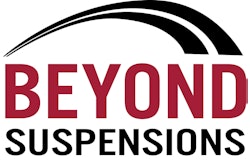It always starts out small. Maybe your parts manager and your service manager don’t see eye to eye. Perhaps there is a disagreement over an allocation of funds and one manager makes a flippant comment to another. Because of business demands, the issue isn’t immediately addressed. Resentment builds and each manager retreats to his own department to fume, venting frustration to co-workers who become non-consenting participants.
The next time the managers meet, tempers flare, fueled by stored animosity, and more permanent damage is done; the conflict escalates from situational to emotional. Soon, both departments are walking on eggshells around irritable managers. The disagreement has become organic and is devouring productive energy like a storm feeding off warm air.
Owners, managers and employees all are at risk for workplace conflict. The unnecessary drama and emotional noise of unhealthy, unmanaged conflict stifles creativity and productivity and closes lines of communication. Worse still, poor internal conflict management can foster dismal employee-customer interactions that do real damage to your business.
Though often attempted, it’s impossible to create a strife-free workplace. But what people don’t always realize is that you don’t want a ripple-free environment; a healthy dose of conflict actually can be a good thing. If managed properly, conflict can point to organizational bottlenecks and help define areas ripe for improvement. By identifying sources of conflict, finding an acceptable format for mediation and developing new procedures to help employees work together better, a manager can move his or her firm from conflict-ridden to collaborative.
IT’S NOT ALL BAD
It’s generally human nature to avoid conflict and no one wants to deal with hostility in the workplace. But what many managers fail to see is that an overly tranquil work environment can develop into a staid business in which innovation is stifled for the sake of keeping peace.
According to experts in the field of organized behavior and management, when employees are equipped with the right tools to handle it, conflict becomes a highly desirable thing, symptomatic of a progressive work environment. It is energizing and invigorating.
Whether the goal is in to get the parts and service departments troubleshooting together, or to find creative service solutions for fleet customers, all aftermarket business owners want their employees to be better collaborators.
Where many managers falter, however, is trying to improve collaboration without addressing underlying conflict, according to Jeff Weiss and Jonathan Hughes, partners at Vantage Partners, a consulting firm focused on strategic relationship management. In their co-authored article, “Want Collaboration? Accept – and Actively Manage – Conflict,” Harvard Business Review, March 2005, they suggest that executives often ignore the dual facts that conflict in a company is both inevitable and important.
“Clashes between parties are the crucibles in which creative solutions are developed and wise trade-offs among competing objectives are made,” they write.
If managers can learn to handle conflict effectively, both at the point of initial disagreement and once it’s climbed up the chain of command, Hughes and Weiss believe that conflict can become a vital business event, a place from which value and inspiration can be drawn.
Conflict can point to and help define nagging organizational issues in the company. Managers who are forced to explain their ideas and methods to employees in conflict often end up having more closely examined and well-considered reasons for what they do.
SOMETIMES YOU WON’T LIKE WHAT YOU SEE
How do you change a group dynamic from contentious to collaborative? Start by taking a long, hard look in the mirror.”Management can create the proper culture, which is based on respect for one another and the customer,” says John Weller, vice president, Weller Reman Center.
“Everyone watches your leadership. You can’t just say this is how we will operate. You will have to live it. You have to let employees know when you see something that is not in line with your culture and let them know that it is not acceptable.”
“There is lots of research to support the idea that the leadership of an organization sets the tone for how people interact with one another in the business,” says Catherine Bush, Ph.D., professor of leadership and organized behavior, DeVos School of Management, Northwood University.
“For example, a coercive or commanding boss who thinks he or she knows everything creates strong negative sentiment in the workplace. He or she generates resentment, negative emotions – and a culture where people gripe to their co-workers.”
Employees working under a coercive or commanding boss may be afraid to voice their opinions or to dissent. This inhibits creativity and turns what could be collaborative energy into negativity.
Eventually, subordinates will emulate the boss’ communication style, perhaps even unintentionally. They will use a commanding or coercive tone with one another and because the workplace norm is contentious, this tone likely will be used with customers.
But it’s not just a coercive style of leadership that can cause problems when it comes to handling conflict. Even a leader with a positive affiliative style of leadership, a term first coined by psychologist Daniel Goleman, Ph.D., can unintentionally set the tone for unhealthy conflict resolution.
“A boss with an affiliative leadership style wants everyone to like him or her,” says Bush. “As a result, people put on happy faces and roll with the punches. But this can lead to a rise of passive-aggressive behavior in the workplace. It can send the message that we’re here to have a good time, but that real problems don’t get addressed. In this atmosphere, good workers will tend to quit rather than work through serious issues.”
Then there’s the pacesetter, another Goleman-defined leadership category. This leader often is surrounded by quality workers with high energy. He or she excels at pushing through short-term tasks and motivating others to keep working, but, according to Bush, “there’s no actual energy in this style.
You sometimes need to solve conflict to move things forward. This leader has no time to ‘sit down and talk’ and people who have issues don’t come forth because they are intimidated. They might feel like whiners if they have problems.”
Think about how these communication styles translate to customer interaction. Will creativity be paved over by an employee’s desire to keep the peace? Will employees continue to innovate if they feel they cannot voice challenges they face? Will they think, “What’s the point? Nothing’s going to change around here.”
It is difficult for a coercive boss, or even for an affiliative or pacesetting one, to recognize the ways in which his or her leadership style might be detrimental to the firm. Although it can be a tough and even an emotional process, Bush recommends starting with self-reflection before seeking information from others.
“People often are afraid to give an authoritarian feedback,” says Bush. “You have to make it okay for people to talk to you, which means opening yourself up. Be interested in what people tell you and entertain it as if it were truth. Don’t be defensive.”
It might take a while for employees to sense that you genuinely are interested in their honest feedback and for them to trust that they won’t be penalized for voicing concerns. If team members still hesitate to give you feedback, closely consider how they interact with one another. A business’ work culture is a reflection of its leader’s conduct.
KEEP PEOPLE TALKING AND RULE WITH EMPATHY
One of the worst things a leader can do is isolate employees with a pattern of conflict. It seems counterintuitive, but if parts manager Joe and sales manager John don’t get along, you want to bring them together, not keep them operating in their own worlds.
Conflict isn’t inherently good or bad, but suppressing it without solving it can push a wave of negativity through the workplace. In other words, don’t slap a Band-Aid on a conflict by merely separating Joe and John and calling it a day. Their conflict will go underground. Joe will take his issues back to the parts department and John will complain about Joe to fellow technicians. Soon everyone is drawn into what was once a two-person argument.
“What you do if you keep conflicted employees separate is you create a special dance that everyone has to help choreograph.
Everyone has to make an effort to support the strained relationship and it just sucks the life out of a workplace,” says Bush.
Instead, bring the two parties together with a trusted third party intermediary. Often, bosses will listen to both sides, before handing down a decision. This, however, doesn’t teach problem solving skills or equip employees to handle issues on their own next time they emerge.
First, clear the air. Help the two conflicting parties understand that people are different and that this is okay. It may even help to initiate the conversation with a discussion of different personality types, using neutral examples as starting points.
Next, bring Joe and John together in one room. Bush recommends having Joe explain what he thinks the issue is from John’s perspective and then having John do the same from Joe’s perspective. This technique fosters empathetic interaction, which is a premium in conflict resolution. You as the mediator aren’t doing the talking here, but rather you’re acting as a neutral presence whose job is to keep both parties conversant.
Once Joe and John are talking, have them toss out ideas for resolution. Keep encouraging empathetic thinking and watch for true collaboration to emerge from a messy conflict. Ultimately, you want both sides to settle on a mutually appealing solution – one they can both take ownership of.
“If you train people how to talk to one another and how to accept their differences, you turn conflict into a conversation that has real value,” says Bush. “You want to create group cohesiveness. A sense of community is important so employees can see one another as human beings. They don’t have to agree with one another, but they need to accept each other as people.”
If you are able to coach your co-workers to treat one another with respect and empathy, this will be reflected in how they listen to customers and think about customer needs first. This is key to quality customer service.
BE AN ENABLER
Perhaps the best leadership style for managing conflict is the coaching style. These leaders help employees grow and learn in their positions; they enable their subordinates to be leaders.
“Coaching leaders are managers who are interested in you,” says Bush. “They listen to you, give constructive feedback and establish a teaching culture. If you are in an environment where people invest in you, you will adopt that behavior when interacting with others.” Once this culture takes root, it will spread to the way employees interact with customers. They will ask more questions and become more effective listeners.
A teaching culture also has the benefit of enabling your employees to think for themselves and to successfully resolve conflict on their own, when it happens. If they are accustomed to both learning from and teaching one another, they are less likely to fall back on default behaviors, fussing over small details.
“Conflict management works best when the parties involved in a disagreement are equipped to manage it themselves. The aim is to get people to resolve issues on their own through a process that improves – or at least does not damage – their relationships,” writes Weiss and Hughes.
Weiss and Hughes advocate the establishment of companywide criteria for problem solving, perhaps even the creation of an easy-to-read chart that maps company priorities. This helps people see the bigger picture and allows them to consider how the problems faced by others might have larger implications.
In short, having a unifying problem-solving protocol breaks down departmental barriers and fosters collaboration. As a side benefit, the rigorous consideration of values and priorities necessary to create such a map is a good exercise for any boss and a best business practice.
“At the very least,” write Weiss and Hughes, “a well-defined, well-designed conflict resolution method will reduce transaction costs, such as wasted time and the accumulation of ill will, that often come with the struggle to work through differences. At best, it will yield the innovative outcomes that are likely to emerge from discussions that draw on a multitude of objectives and perspectives.
“[The problem-solving method] also should be made an integral part of the existing business activities








